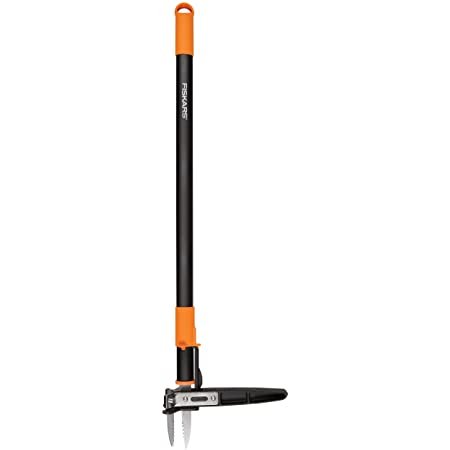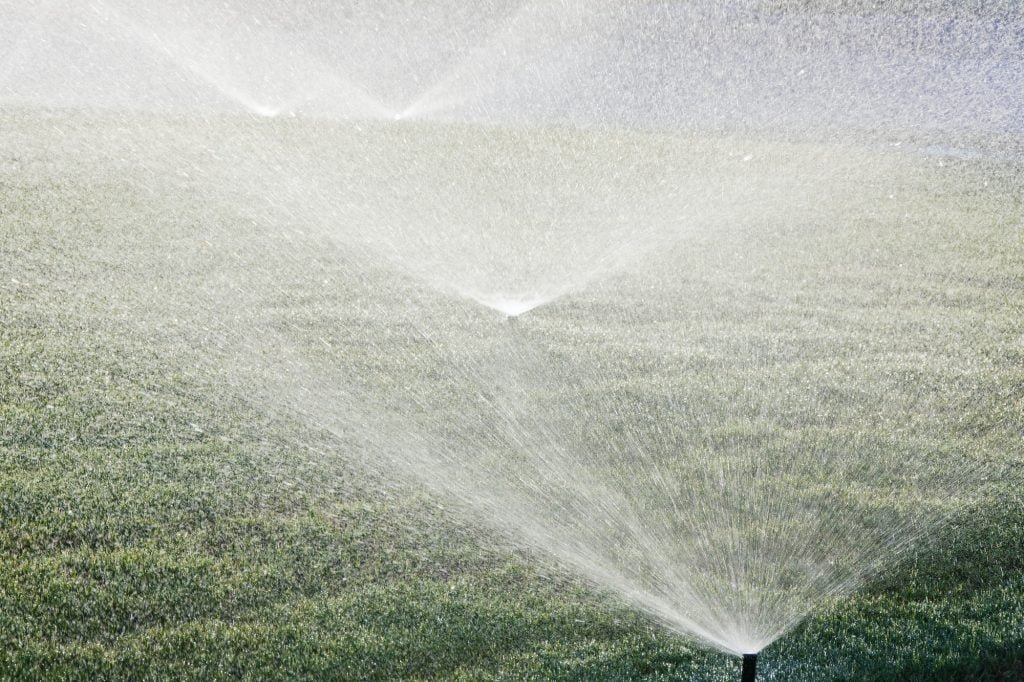To control the dreaded crabgrass, we need to understand what it is and what it looks like in the GTA. As the name suggests, this annual weed grows horizontally along the ground like a crab instead of being a tall and vertical like the grass we see on our lawn. There are two common varieties of this weed that appear in the GTA. One is called hairy crabgrass for which the proper name is Digitaria Sanguinalis, and the other is Digitaria Ischaemum known as smooth crabgrass. Both are not only difficult to say quickly, but are generally considered unattractive and common in lawns that have bare spots in which they love to grow.


A single mature crabgrass plant can release up to 150,000 seeds allowing it to spread quickly. In addition, seeds can actually stay dormant for up to 15 years, making it difficult to stop from spreading. This is why many experts advise against rototilling your lawn too deeply, as you will just be bringing dormant weed seeds back to the surface to germinate. Crabgrass starts germinating (sprouting roots and beginning to grow) in spring and fall when the soil temperature is around 55 F (12.8 C) for 4-5 consecutive days. Lawns that have bare spots can be infiltrated by crabgrass very quickly and can be a headache to get rid of once out of control.

Now that we know what crabgrass is, and a general idea of how they spread, what can be done about it? Crabgrass can be controlled by a few techniques which we will organize by application/control method:
This is the way most people would prefer to eliminate or control weeds. This includes area spraying with a liquid, or applying granular pellets via spreader. This method uses selective weed control that focuses on your target weeds and not your grass.
This method could take more time and is ideal when you have only a few weeds to take care of. It requires focusing on the weed itself, requiring care as you can damage the grass you are trying to save.
Considered the best option to control crabgrass. Good maintenance and lawn care, preventing crabgrass to grow is the best way to control crabgrass.
When homeowners think of “spraying” for weed control, they generally think of blanket spraying to save time. There are two ways of spraying herbicides: pre-emergent and post-emergent. Pre-emergent spraying is applied before crabgrass grows to prevent germination. Post-emergent spraying is applied after the crabgrass has grown by touching the leaves directly and killing the weed. Unfortunately in Ontario, cosmetic herbicides were banned in 2009 so there are currently no pre or post emergent sprays (i.e. Tenacity and Quinclorac) that can effectively control crabgrass. Effective solutions available down in the United States are not permitted for use by homeowners and weed control companies in Ontario. There is a granular pre-emergent spread that uses corn gluten meal as the main ingredient, but this path is difficult because:

The best way to rid crabgrass is to manually pull crabgrass early by hand or with a de-weeding tool of your choice (we recommend the claw type de-weeder). Manually pulling crabgrass is easier when the ground is moist, making it easier for the roots to be released from the soil. Ideally you want to pull crabgrass before it matures, and especially before the crabgrass grows seeds. You can also spot spray with non-selective herbicide (Roundup available in Canada), but this can also kill grass too, so one needs to exercise caution and care. Vinegar can also be used, but will generally require multiple applications. Household vinegars also have a hard time killing mature crabgrass, so you’ll have to use a stronger horticultural vinegar. Horticultural vinegar is more effective but one needs to be cautious so as to not damage the other grass.

As Benjamin Franklin once advised, “an ounce of prevention is worth a pound of cure”. Poor lawn maintenance is what encourages crab grass as bare spots are ideal for crabgrass growth. The general idea is to ensure your grass is growing strong, crowding out any potential spots that crabgrass can grow into. Watering deeply encourages strong roots for your grass and makes your soil soft and easier to pull the crabgrass out. We also encourage growing your grass taller (3-4 inches) as crabgrass thrives in warm soil and direct sunlight. For any larger bare spots, it is important to apply seeds or re-sod depending on the severity. To summarize, you want to remove any crabgrass and fill in any bare spots with grass, than follow up by keeping good lawn maintenance so your grass can overcrowd any potential spots crabgrass may grow.
As good lawn maintenance is the best way to prevent crabgrass, sprinkler systems are a huge contributor to a great lawn and a big factor in controlling crabgrass. However, installing a sprinkler system is not the end all, watering crabgrass and weeds will not help as weeds benefit from water just as much as grass. Ideally, you need to use methods to remove crabgrass first, and then move directly into prevention such as overseeding, resodding and keeping grass tall.
Sprinklers help keep new grass strong and full, as proper irrigation supports deeper roots, the ability to pull out new crabgrass easily and supports overall health of the lawn.
Keep in mind, different water amounts are needed for several grass or plant types and varying conditions. For example, too much water can cause disease and erosion, so the watering needs to be automated based on the current available water in the ground, current season, daily temperature and predicted rain.
-Keeping the soil moist making it easier to remove existing weeds, and encourages growth of new grass. Dry soils are not ideal for grass growth and encourages weed growth.
-Success of installing new sod as it needs to be kept moist the first few weeks, followed by deep watering to encourage proper root growth
-Assisting new seed growth. Remember, the saying goes “if new seed DRIES out, it DIES out.” It is critical to keep soil moist to ensure higher rates of germination.
-Deep root growth. Shallow roots weaken grass and increases chances of a thin lawn. This makes it harder for your lawn to feed and absorb nutrients increasing damage during hot weather.

It is possible to manage crabgrass and be proud of a luxurious lawn this season. Remember, providing your lawn with the appropriate care, maintenance and irrigation, prevents crabgrass from slowly making its way back into the bare spots on your lawn. You will be spending more time and money repairing your lawn by allowing it to slowly thin out due to lack of water and maintenance. By following the tips laid out and through the use of sprinklers you will save time, money and energy while achieving that perfect green lawn!
-Prevention is key, keep lawn healthy, lush, remove crabgrass as you see them
-Address any bare spots in the lawn via overseeding or resodding
-Mow your grass taller (3-4 inches) to discourage ideal crabgrass environment
-Water deeply and less frequently to encourage strong roots
-Install a sprinkler system to ensure correct amount of moisture
Tedot’s Finest Landscaping and Sprinklers provides complete sprinkler and irrigation design, installation and maintenance services in the Greater Toronto Area. Our commitment to your lawn goals combined with our knowledge, quality service, integrity and professionalism makes us your go-to partner for lawn and garden irrigation services in the Greater Toronto Area (Toronto, Scarborough, Richmond Hill, Markham, Pickering, Ajax, Whitby and Oshawa). Call us to experience our expertise and passion in all aspects of the project from grass and soil to automation and efficiency. Contact us today to up your weed control game and get a sprinkler system quote!

Control crabgrass in the GTA with a Best of Award Winner!